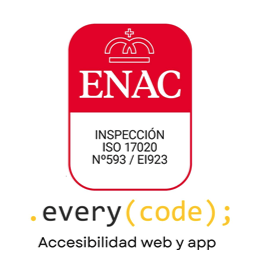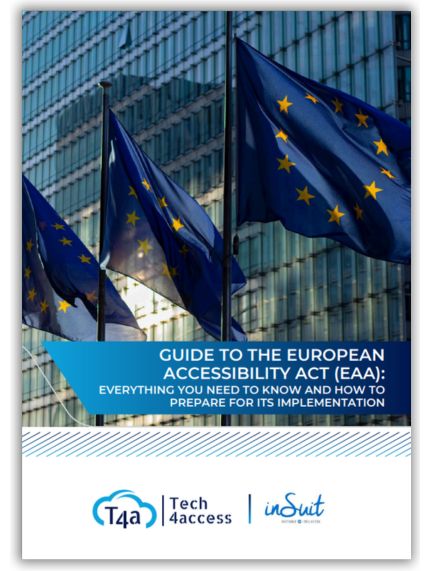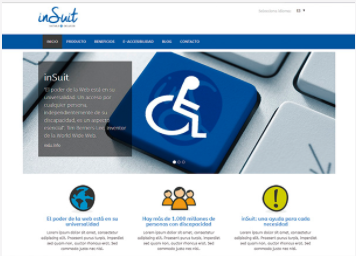

Today we will learn about the 10 trends in digital accessibility for 2025. To do so, we must remember that digital accessibility continues to evolve at a rapid pace, driven by technological advances and a growing awareness of the importance of digital inclusion.
In 2025, we will see how various trends will set the tone for ensuring that websites and applications are not only accessible, but also usable and efficient for all users, without exception.
In this regard, digital accessibility regulations are undergoing rapid transformation, adapting to technological innovations and, above all, seeking to ensure broader and deeper digital inclusion.
Regulations will focus on a more comprehensive approach, designed to integrate with emerging technologies, with a strong emphasis on rigorous compliance and inclusion. This change promises a more equitable and enriching digital experience for every user.
In this article, we explore the digital accessibility trends for 2025 that are transforming the digital landscape, emphasizing how these trends not only meet legal requirements but also open up new opportunities to foster true digital inclusion.
Always keeping in mind that digital accessibility trends for 2025 are not simply a legal requirement in many countries, but rather an invaluable opportunity to generate a positive social impact.
Adapting to these trends is crucial to ensuring that websites and web applications are accessible to everyone, thereby improving usability, SEO ranking, and, of course, brand reputation.
10 digital accessibility trends for 2025 that will make a difference
1. Expansion of digital accessibility in national and international laws
- European Accessibility Act (EAA):
The EAA or European Accessibility Act imposes mandatory accessibility standards for digital products and services in private companies, with an imminent deadline: June 28, 2025.
Websites, mobile apps, e-commerce, and electronic devices must comply with these requirements or face financial penalties and a serious impact on their reputation.
Time is running out and adaptation is not optional. Companies that have not yet prepared for digital accessibility are at risk.
That’s why we’ve developed a comprehensive guide that explains everything you need to know to comply with the regulations and avoid penalties, ensuring that you meet the EAA before it’s too late.
Download the guide now and ensure your company’s compliance before the deadline!
- Accessibility Law in the US (ADA and Section 508):
With regard to this regulation, updates to legal interpretations are anticipated to cover modern technologies such as the metaverse and interactive digital platforms.
- Standards in Latin America:
Latin American countries are strengthening their laws to align national standards with the WCAG guidelines and UN on the rights of persons with disabilities.
If your company operates in Latin America, inSuit provides you with key information about digital accessibility regulations in the region and how they impact your company or organization.
2. Inclusive design and adaptive UX
Inclusive design has become an essential priority for companies seeking to offer accessible and personalized digital experiences.
For this reason, by 2025 we anticipate even greater adoption of flexible interfaces designed to dynamically adjust to the individual needs of each user.
This involves the ability to configure and customize aspects such as colors, fonts, navigation structures, etc., allowing each person to adapt the website to their specific preferences and requirements.
Accessible design not only benefits people with disabilities, but also improves the experience of all users, increasing satisfaction and loyalty.
If you would like to learn more about this topic, we have put together a guide with 16 tips for accessible web design that can help you implement this type of design.
3. Subtitles, audio description, and multisensory content
The implementation of high-precision automatic subtitles, detailed audio description, and multisensory content options will become essential elements for enriching the experience of users with hearing or visual impairments and will continue to gain relevance.
These elements are essential to ensure that audiovisual content is accessible to everyone, complying with international standards such as WCAG.
4. Personalization and improved user experience
In 2025, websites and applications will go further by offering advanced personalization options. Users will be able to adjust the interface to their individual needs by modifying font size, contrast, reading speed, and optimizing keyboard navigation.
These adaptations not only improve accessibility, but also reduce the abandonment rate and increase overall usability. Hence the importance of knowing one of the most prominent accessibility error remediation solutions, inSuit Accessibility Manager™.
5. Update of international standards (WCAG 3.0)
Version 3.0 of the WCAG, currently being developed by the W3C, promises a broader, more flexible, and more personalized approach compared to previous versions.
It will introduce a scoring system that will allow for a more comprehensive assessment of accessibility, moving beyond the traditional binary “compliant/non-compliant” approach.
In addition, it will include new guidelines adapted to emerging technologies such as augmented reality (AR), virtual reality (VR), and dynamic content. Click on the link below and stay up to date with the WCAG 3.0 draft, so you can prepare for the upcoming changes!
6. Incorporation of emerging technologies into legal regulations
- Augmented and virtual reality:
New regulations will require accessibility in immersive experiences, including scene narration, tactile translation, and compatibility with screen readers. Hence the importance of knowing a reliable guide on how to create a metaverse accessible to all users, ensuring that your immersive experiences are inclusive.
- Artificial intelligence (AI):
Specific regulations are expected to be defined to ensure that AI systems do not perpetuate biases or discriminate against people with disabilities.
Learn about artificial intelligence and its impact on digital accessibility with the resources available from inSuit.
7. Greater focus on mobile device and application accessibility
With the growth in mobile device use, accessibility in these environments is becoming crucial. Mobile-friendly apps and websites will ensure that more users can access and interact with content without barriers.
Regulations will begin to require mobile applications to meet the same accessibility standards as websites, especially in sectors such as banking, education, and public services.
8. Stricter monitoring of regulatory compliance
Companies and governments will be subject to regular digital accessibility audits, with stricter regulations imposing significant fines on public or private organizations that fail to meet minimum standards.
In addition, organizations will be required to publish regular reports on the accessibility status of their digital platforms.
9. Integration into business regulations and certification processes
Digital accessibility is being integrated into companies’ Corporate Social Responsibility (CSR) policies. This has led to the development of certifications or seals that companies can obtain by complying with the highest accessibility standards, integrating digital accessibility as a key pillar in sustainability and corporate equity programs.
These developments highlight that accessibility is not only a legal obligation, but also an opportunity to improve brand reputation and social impact.
Everycode, the company that developed inSuit, has obtained accreditation for its technical audit unit in digital accessibility from ENAC. This certification is based on the ISO 17020 standard as a type C inspection body, allowing it to carry out inspections of websites and mobile applications in accordance with the European technical standard EN 301 549.

10. Global vision of accessibility as a fundamental right
In line with the UN Convention on the Rights of Persons with Disabilities (CRPD), countries are harmonizing their legislation to guarantee digital accessibility as a fundamental human right.
Let us not forget that equality and equal opportunities for persons with disabilities are guaranteed and recognized through non-discrimination, universal accessibility, and positive action in all areas.
inSuit is your partner for comprehensive digital accessibility
For companies seeking to comply with accessibility regulations and meet 2025 accessibility trends effectively and hassle-free, inSuit offers the Comprehensive Digital Accessibility Service (SIA®).
This service provides a complete and customized solution through a modular and adaptive solution consisting of four phases, which benefit public institutions and private companies with the aim of ensuring that websites or web applications comply with the most demanding accessibility standards.
Digital accessibility trends for 2025 open up a world of possibilities
In short, digital accessibility trends for 2025 not only seek regulatory compliance, but also open up a world of possibilities for improving the user experience and promoting digital inclusion.
By adopting these trends, your websites or web applications will be ready for the present and the future, offering an accessible and equitable experience for everyone. If you are interested in making your digital assets truly accessible, don’t hesitate to contact us!

